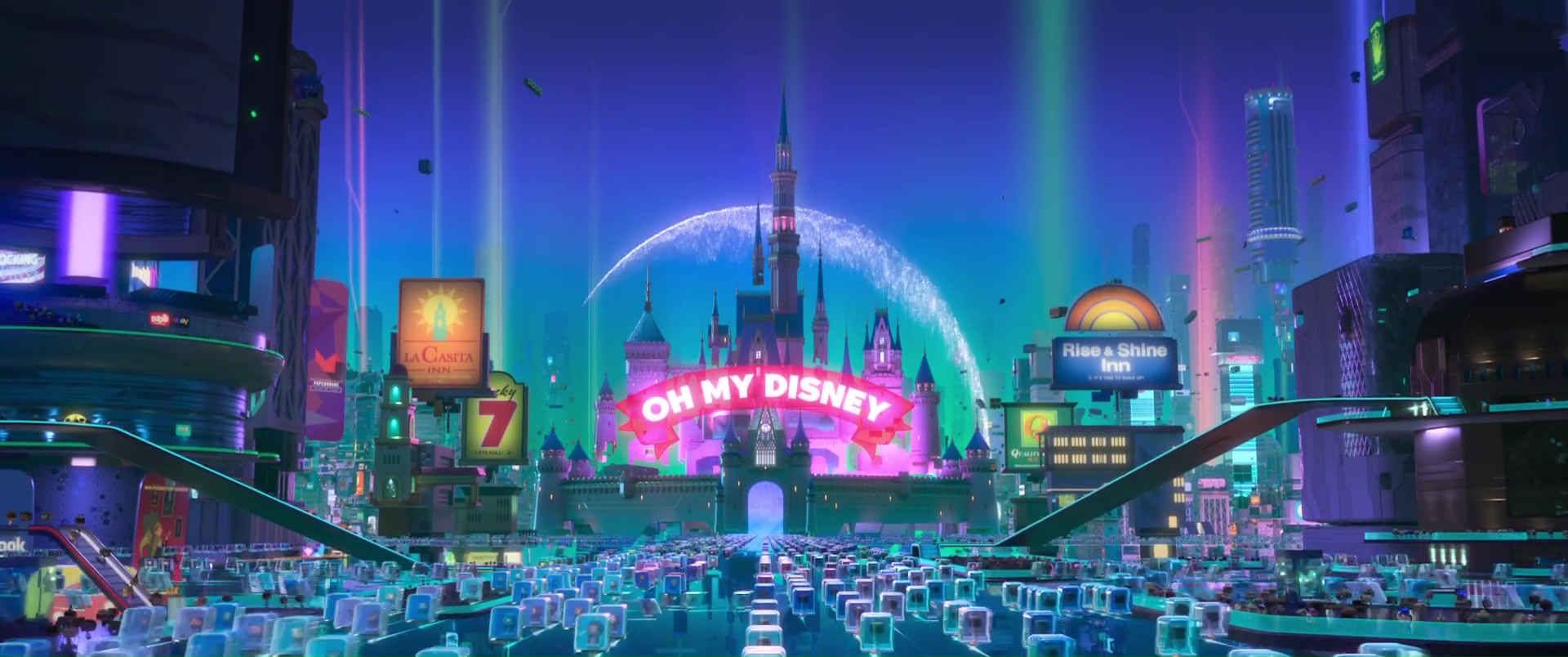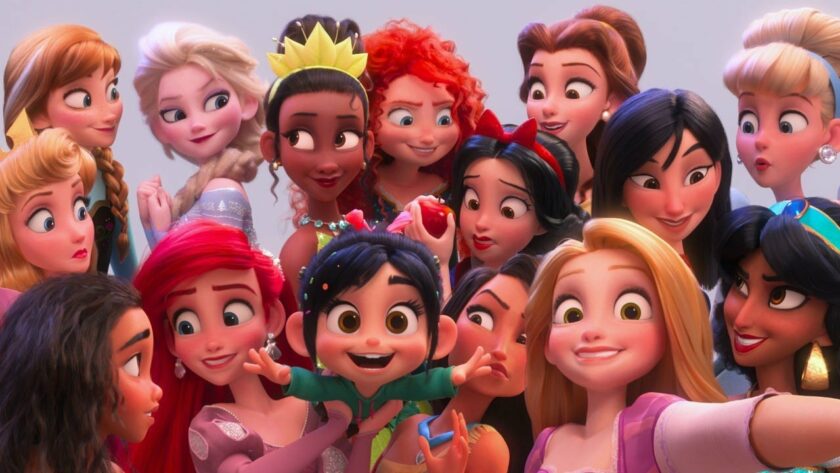Editor KC Wingert critiques Disney’s video-game based animated sequel and its relationship to today’s consumerist media landscape.
Ralph Breaks the Internet, the follow-up to Disney’s 2012 animated feature Wreck-It Ralph, finds Ralph (John C. Reilly) and Vanellope (Sarah Silverman) six years later. Now best friends, the two spend their days hopping from game to game in their small arcade, but Vanellope secretly longs for something more. Ralph, in an attempt to bring some excitement to the arcade for Vanellope’s sake, accidentally sets off a chain of events that breaks the Sugar Rush game’s steering wheel, shuts down the game console, and displaces all of its characters. In order to replace the broken wheel and save Sugar Rush from permanent retirement, Ralph and Vanellope must venture into the unknown world of the internet to buy the only Sugar Rush steering wheel available in the world, which happens to be listed on ebay.

This film uniquely imagines the internet as a real, physical place where humanoid avatars represent all internet users’ data footprints; where juggernaut brands like Google and Pinterest occupy giant skyscaper-esque structures; and where pop-up ads pester people on the sidewalk like annoying street hawkers. Many of the film’s jokes are references to memes—even the film’s title refers to Kim Kardashian’s now legendary half-nude PAPER Magazine cover—that will feel outdated to someone watching in ten years. With jokes dependent on content from a rapidly changing media sphere dominating the film’s humor, writers Phil Johnston and Pamela Ribon have essentially cemented their screenplay’s eventual obsolescence. Even the bonus scenes at the end of the film are references to memes and the film’s own marketing campaign. These extratextual references may prove delightful to children eager to be in on the joke, but they only serve as marketing for various websites and apps and feel unnecessary to the story.

Clearly the intention behind this film was not to create the lasting power of a positive message, as one usually expects out of a children’s film, but rather its purpose was to create another franchise designed to milk as much money out of loyal fans as possible. The only ultimately positive messages that could be eked out of this nearly 2-hour ode to the coterie of companies that profit from invading people’s privacy are: 1) don’t read the comments on the internet, because people can be mean, and 2) don’t try to prevent your friends from following their dreams.
Moreover, Ralph Breaks the Internet acts as a tool to promote brand familiarity in children, with happy-go-lucky shout-outs to Google, Instagram, Amazon, and other internet behemoths which we now know to be engaging in less-than-ethical moneymaking practices. With a children’s film about the internet, directors Phil Johnston and Rick Moore could have created a teaching tool for parents to broach the subjects of data harvesting, identity protection, cyberbullying, and other issues their kids might encounter online. However, Disney, a media conglomerate in and of itself, seems to view Ralph Breaks the Internet as an opportunity to tout its own influence over today’s media landscape.

A large segment of the film is dedicated to Vanellope’s newfound friendship with the Disney Princesses, whose cheeky introduction in the movie’s trailer went viral among delighted feminists and Disney-philes alike. The princesses, after hearing that Vanellope is also royal, try to find out what type of princess she is by interrogating with a line of questioning—“Were you poisoned? Cursed? Kidnapped or enslaved?”—to which Vanellope responds, “Are you guys okay? Should I call the police?” When Vanellope says that people assume her problems were solved when a man showed up in her life, they exclaim, “She is a princess!” But this humorously metatextual, feminist moment shouldn’t fool anyone hoping to find radical themes within the rest of the film. This portion of the movie also includes cameos from other Disney films—from Winnie the Pooh to Zootopia—as well as from Disney-owned subsidiaries like the Marvel universe and Star Wars. In this critic’s opinion, this clearly shows how the film serves as a tool for Disney to essentially trumpet its own media empire within one of its films, with thinly-veiled product placement. Ralph Breaks the Internet therefore becomes no more than a Disney marketing campaign that will inevitably pay for itself.
Ultimately, Ralph Breaks the Internet is a blatant initiative to sell, sell, sell to those among us who aren’t able to make informed decisions about their consumption: children. The film is a 2-hour long advertisement that would leave any children’s media literacy educator aghast. While the film’s story, visuals, and performances were well-executed, it is fundamentally a tool for indoctrinating children into complacency in a media landscape that serves massive companies, not individuals.
Ralph Breaks The Internet is currently out in cinemas everywhere, check out its trailer below:




